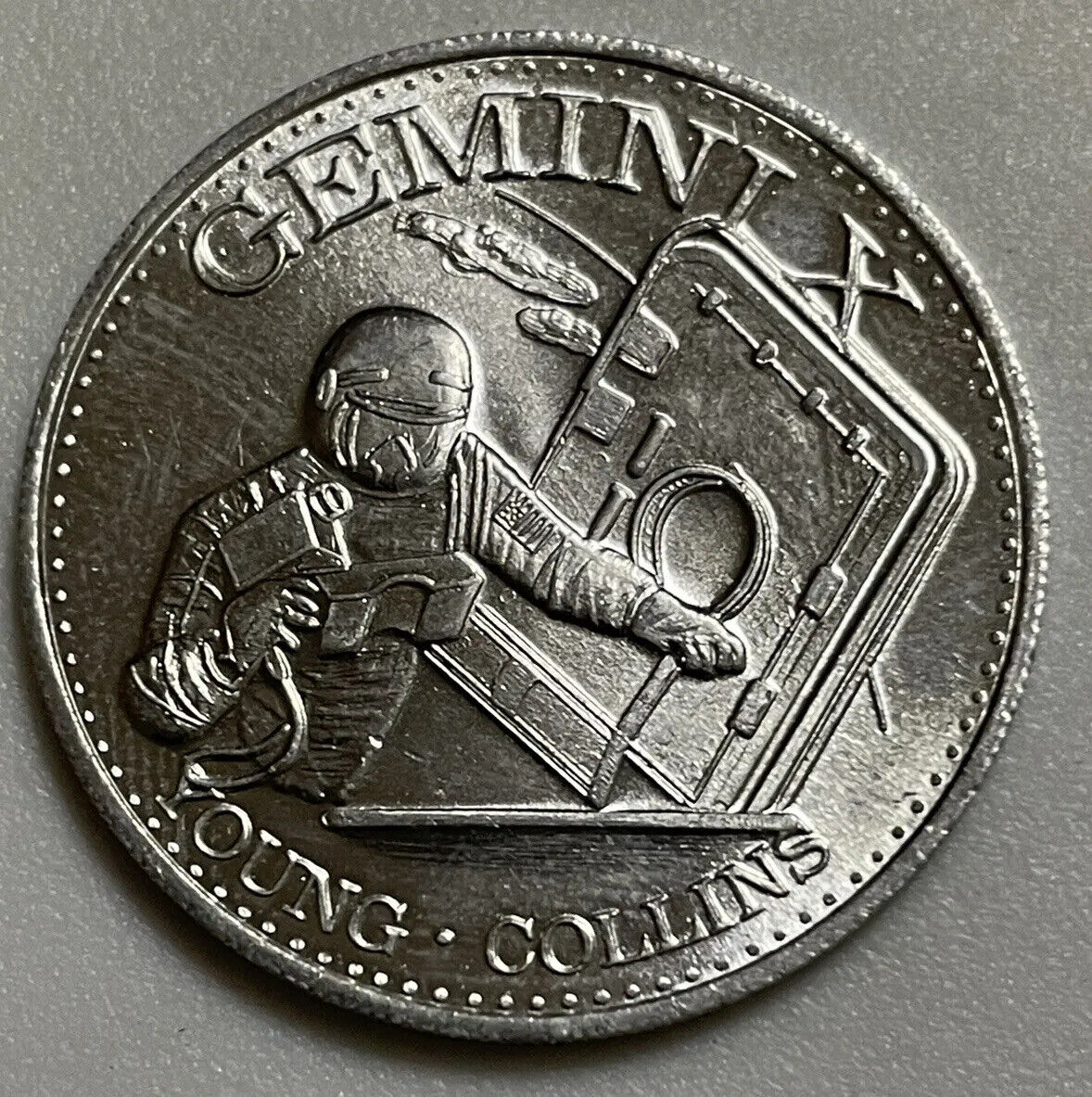-40%
Mercury 3 GEMINI III 7 & 10 Apollo XI Man In Space Aluminum Token 25mm 1969 Coin
$ 26.4
- Description
- Size Guide
Description
25mm 1969 MAN IN SPACE Mercury 3 GEMINI III 7 & 10 Apollo XI Aluminum Token Coin.Mercury-Redstone 3, or Freedom 7, was the first United States human spaceflight, on May 5, 1961, piloted by astronaut Alan Shepard. It was the first crewed flight of Project Mercury. The project had the ultimate objective of putting an astronaut into orbit around the Earth and returning him safely. Shepard's mission was a 15-minute suborbital flight with the primary objective of demonstrating his ability to withstand the high g-forces of launch and atmospheric re-entry.
Gemini 3 was the first crewed mission in NASA's Project Gemini and was the first time two American astronauts flew together into space. On March 23, 1965, astronauts Gus Grissom and John Young flew three low Earth orbits in their spacecraft, which they nicknamed Molly Brown. It was the first U.S. mission in which the crew fired thrusters to change the size and shape of their orbit, a key test of spacecraft maneuverability vital for planned flights to the Moon. It was also the final crewed flight controlled from Cape Kennedy Air Force Station in Florida, before mission control functions were moved to a new control center at the newly opened Manned Spacecraft Center in Houston, Texas.
Gemini 7 (officially Gemini VII)[5] was a 1965 crewed spaceflight in NASA's Gemini program. It was the fourth crewed Gemini flight, the twelfth crewed American spaceflight, and the twenty-first crewed spaceflight including Soviet flights and X-15 flights above the Kármán line. The crew of Frank Borman and Jim Lovell spent nearly 14 days in space, making a total of 206 orbits. Their spacecraft was the passive target for the first crewed space rendezvous performed by the crew of Gemini 6A.
Gemini 10 (officially Gemini X)[2] was a 1966 crewed spaceflight in NASA's Gemini program. It was the 8th crewed Gemini flight, the 16th crewed American flight, and the 24th spaceflight of all time (includes X-15 flights over 100 kilometers (54 nautical miles)). During the mission, flown by John Young and future Apollo 11 Command Module Pilot Michael Collins, Collins became the first person to perform two extravehicular activities.
Apollo 11 (July 16–24, 1969) was the American spaceflight that first landed humans on the Moon. Commander Neil Armstrong and lunar module pilot Buzz Aldrin landed the Apollo Lunar Module Eagle on July 20, 1969, at 20:17 UTC, and Armstrong became the first person to step onto the Moon's surface six hours and 39 minutes later, on July 21 at 02:56 UTC. Aldrin joined him 19 minutes later, and they spent about two and a quarter hours together exploring the site they had named Tranquility Base upon landing. Armstrong and Aldrin collected 47.5 pounds (21.5 kg) of lunar material to bring back to Earth as pilot Michael Collins flew the Command Module Columbia in lunar orbit, and were on the Moon's surface for 21 hours, 36 minutes before lifting off to rejoin Columbia.























